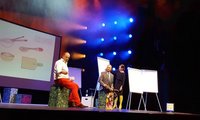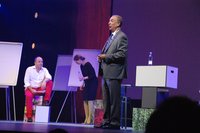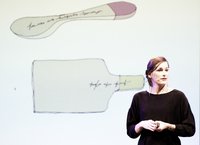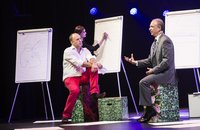Session 1 - Molecules and memory
Session 1 - Molecules and Memory - Marije Vogelzang, Charles Spence and David Sutton
How does the brain and culture work together to create the huge impact taste has on memory, and the other way around? Surely, taste cannot be understood as a simple meeting point between food stuff and taste receptors. The ways we experience taste are both universal, individual and cultural. But how do these different aspects; brain, culture, physics of taste relate to one another?
To facilitate the dialogue on the subject, we invited eating designer, Marije Vogelzang, to be the creative mediator, and professor of experimental psychology, Charles Spence, and professor of anthropology, David Sutton, to be the experts.
Marije Vogelzang
Eating designer and artist Marije Vogelzang is known for her creative ways of using food experiments and art to challenge the way we feel and interact.
Focusing on the verb “eating” rather than food in itself, Vogelzang explores rituals, cultural behaviour and the manufacturing of food to pinpoint how food is not only something we consume but something that connects us.
David Sutton
Anthropologist David Sutton is known for his research on the senses, memory and how historical consciousness influence daily life. Sutton has explored everyday cooking practices on Kalymnos in Greece.
Focusing on the cooking techniques and habits in the home kitchens of Kalymnians, Sutton says that these micro-practises are used to evoke personal and collective memory and reflects the Greek financial crisis.
Charles Spence
Professor of experimental psychology, Charles Spence is known for his research of how the senses influence multisensory experiences of everyday life. With a focus on synesthetic experience he says that sound influences how we taste. His research creates foundations for developing a better design of food products and environments.
With his experimental methods and over 500 published scientific articles he has been awarded prizes such as the Friedrich Wilhelm Bessel Research Award from the Alexander von Humboldt Foundation in Germany and the IG Nobel prize for nutrition.





